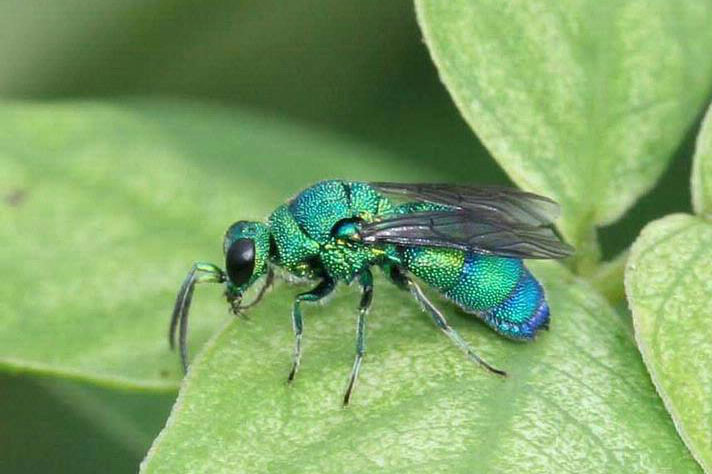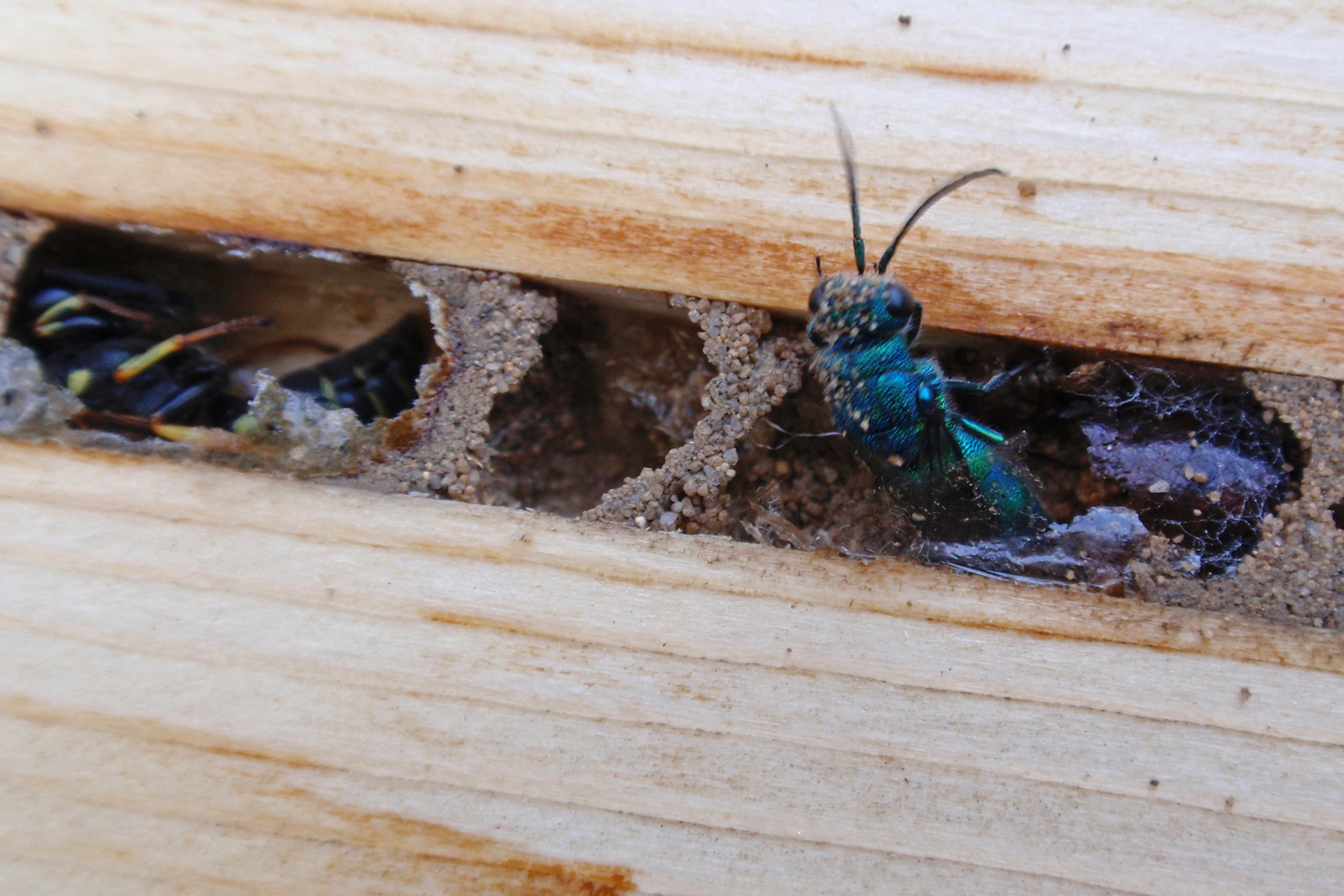Michigan insects in the garden - Week 10: Jewel wasps
These shiny metallic wasps prey on unsuspecting bees and wasps.

With bright metallic blue or green bodies, Chrysidid wasps (also called jewel wasps) are a stunning sight in the garden. In Michigan, jewel wasps are most likely to be spotted June through August. Approximately the same length as sweat bees and easily mistaken for a bee (Photo 1), they spend time stalking host insects in vegetation and sipping nectar on flowers. Little is known about their floral preferences, but they tend to visit asters and flat-topped flowers in the carrot family. However, jewel wasps’ similarity with bees ends there.
Not a bee but a parasitoid
Chrysidid wasps lack hairs on their body and are covered with coarse pits or sculpturation. The absence of hairs means they can’t transfer pollen. They don’t take care of their own offspring either. Rather, they offload child-rearing responsibilities to another insect in one of several ways.
Some jewel wasp species complete their life cycle as parasitoids. An insect that is a parasitoid has a close association with another insect (the host). It is similar to being a parasite, except that parasitoids must kill their host to finish development. Jewel wasp species that follow this life cycle lay their eggs inside the larvae of their host. Other jewel wasp species lay eggs directly in the nests of another insect rather than inside the host insect itself. This behavior lets another species rear the jewel wasp eggs into adults without the host realizing it is taking care of another species’ offspring (Photo 2). The jewel wasp’s eggs will hatch into larvae and will sometimes eat the host insects’ larvae that develop into the same nest.

The most frequent hosts of Chrysidids are sawfly, wasp and bee larvae. Normally, a parasitoid specializes in attacking one specific group of insects. The vastness of potential host insects in jewel wasps is due to the multiple times that this group of wasps’ reproduction habits have evolved. One unique feature across all Chrysidids is their inability to sting. At the back of the abdomen, they have an ovipositor for laying eggs, but it cannot sting. When in danger, jewel wasps curl into a ball for defense.
At least 64 Chrysidid species exist in Michigan with most being metallic blue or blue-green in the genus Chrysis. Species in the genus Omalus tend to have rose to orange colored abdomens (Photo 3) and are parasites of sphecid and crabronid wasps that in turn parasitize aphids or leafhoppers. Chrysidids can be identified to species level, and though it will require capturing a wasp in a jar or pinning in a collection to inspect differences in head and abdominal features. Studying a group of insects that develop as parasites underground is a challenge. Consequently, most research on this group of insects is focused on taxonomy and descriptions of the host insects parasitized.

Jewel wasps are neither directly beneficial nor detrimental to the garden. They are part of a complex ecosystem in the garden. When Chrysidids are present, this means that there are a sufficient number of bees or wasps for their populations to continue even if some are attacked by the parasitic jewel wasp. Like other solitary wasps, jewel wasps are more likely to occur in habitats with greater floral diversity and undisturbed patches of grass or soil for potential nesting sites.



 Print
Print Email
Email


